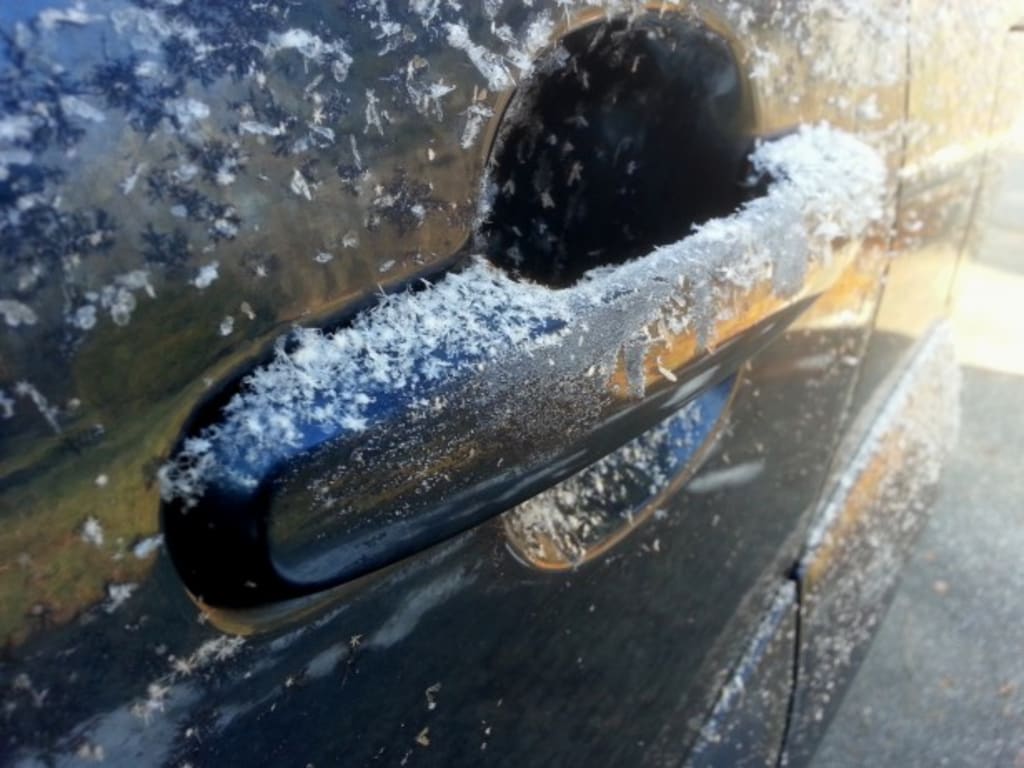8 Simple Methods for Opening a Frozen Car Door Lock
Read our helpful tips for thawing frozen door locks. On chilly days, our quick fixes for numb fingers.

Car owners may encounter various issues during the winter. These include stalled engines, dangerous driving behaviour, and countless others. A widespread problem with cars is the door-locking mechanism freezing up on you, which isn't as bad as some other issues but is still annoying.
If they've already been frozen, there are tried-and-true ways to keep them alive.
how do I know if my car door is frozen
If you live in an area that experiences cold winter temperatures, you may wonder if your car door is frozen. Sometimes, this can be a major inconvenience and prevent you from getting into your car. Here are a few tips to help you determine if your car door is frozen and how to remedy the problem.
1. Check the Outside Temperature: The most obvious way to determine if your car door is frozen is to check the outside temperature. If the temperature is below 32 degrees Fahrenheit, then it is likely that your car door is frozen. If the temperature is above 32 degrees Fahrenheit, then it is unlikely that your car door is frozen.
2. Try to Open the Door: If you’ve determined that the temperature outside is below 32 degrees Fahrenheit, then your next step should be to try to open the car door. If you cannot open the door, it is likely that it is frozen.
3. Check for Ice: If you are unable to open the car door, look for ice on the door. If there is a thin layer of ice on the door, the door is likely frozen.
How to stop the door to your car from freezing
1. Add a magnet to the lock in step one
The keyhole won't freeze if you put a magnet on top. Most magnets work as long as they are large enough to cover the keyhole. Put the magnet on the lock as soon as you step out of your car. Place the magnet over the lock once inside your vehicle, and then store it in your pocket or purse for later use.
2. Apply WD-40
WD-40 can be used to keep your car's door locks lubricated and frost-free. Spray some into the lock to stop frost and ice accumulation for a few days. While you're at it, you might also want to spray some into your trunk lock.
Opening a frozen car door lock
Okay. Okay. You can try a few short-term solutions. You may only need one or a few of these, and you won't need to hire a locksmith.
1. Clean up your key
The high amount of alcohol in hand sanitizers keeps them from freezing and lets them melt ice. Spray a little of the gel onto your key after a few rotations.
2. Lubricate your key
A vital lubricant like petroleum jelly can make the lock turn quickly. It may take longer to do the essential things than hand sanitizer, but it still works very well. Turn the key in both directions after lightly coating it with petroleum jelly.
3. Get your key ready

A stuck frozen lock can be opened with a lighter or by heating your key. If the lock is completely frozen, you might need to heat the key several times. Take your time and turn the key slowly in each direction, just like all other techniques. The ice should start to melt in a few minutes.
4. Keep de-icing spray close at hand
A de-icing spray that is sold commercially is even more efficient than the previous solutions. Keeping it in your car's glove box wouldn't be a good idea. Therefore, be sure to keep a spare at home or work desk.
Your breath might be all that is required to open your car's door if you are in a situation where you have no other choices. Wrap your hands around the lock, then blow into it. The lock should start to thaw within a few minutes, though you might need to repeat this procedure several times.
Is my lock freezing going to damage the vehicle?
The answer is complicated if you wonder whether your frozen lock will damage your vehicle. Lock freezing is a technique used by locksmiths to break into a car with a jammed lock. The process involves spraying compressed air into the lock and then using a metal pick to release the lock. In general, the lock freezing process should not damage your vehicle. As long as the locksmith is careful during the process and doesn't use excessive force, there shouldn't be any damage.
In some cases, the locksmith might need to drill out the lock, but this is usually done as a last resort. However, it's important to note that there is always a risk of damage when attempting to open a jammed lock. If the locksmith is careless or uses too much force, it's possible that they could damage the lock or the surrounding area. The lock freezing process could cause other parts of your vehicle's locking system to malfunction. Given the potential risks, hiring a reputable and experienced locksmith is essential. Make sure that the locksmith knows how to freeze locks and that they have insurance. That way, if something does go wrong and your vehicle is damaged, you'll be able to get compensation.
About the Creator
Mahbub Murshed
Content Creator






Comments
There are no comments for this story
Be the first to respond and start the conversation.